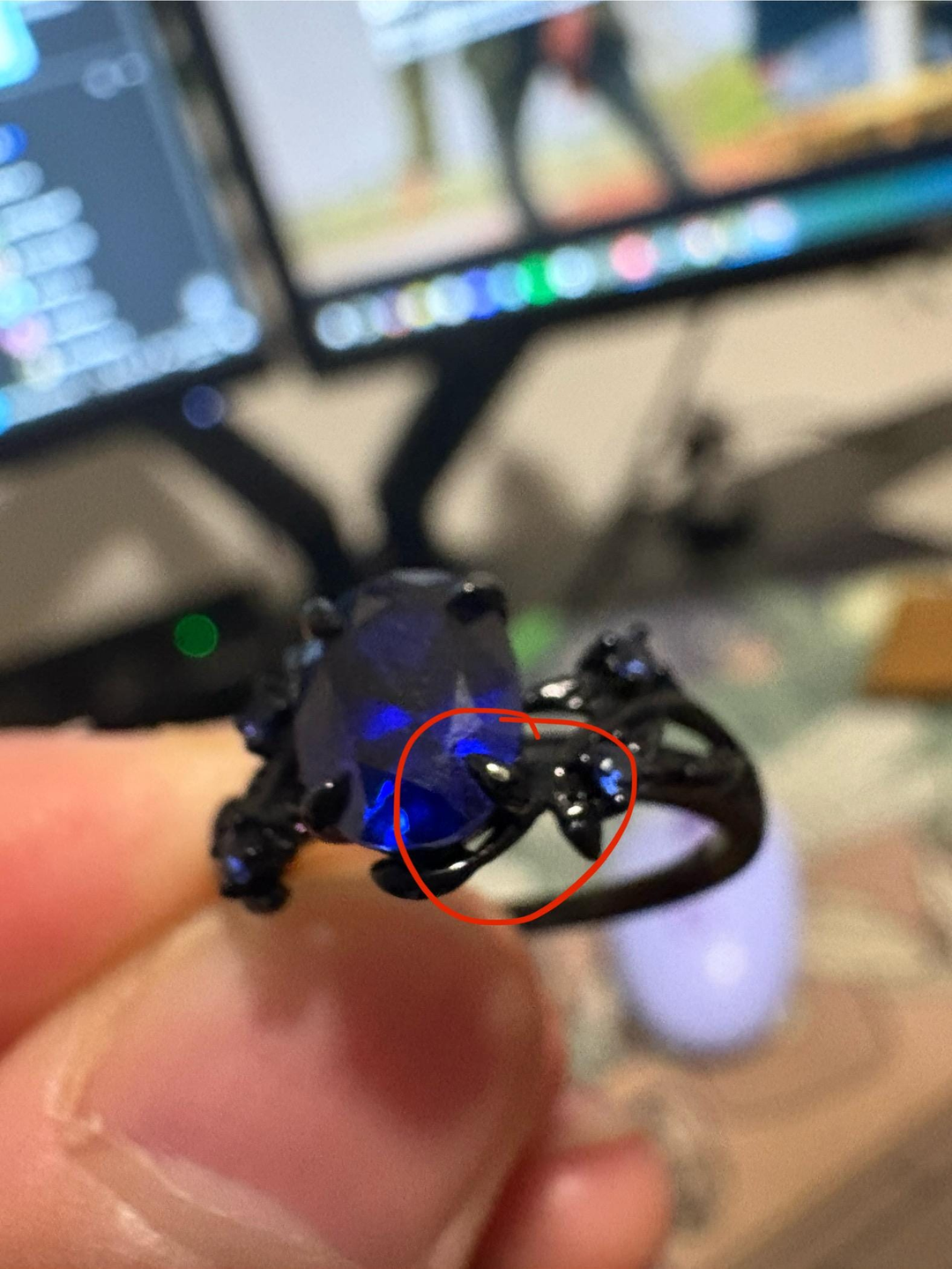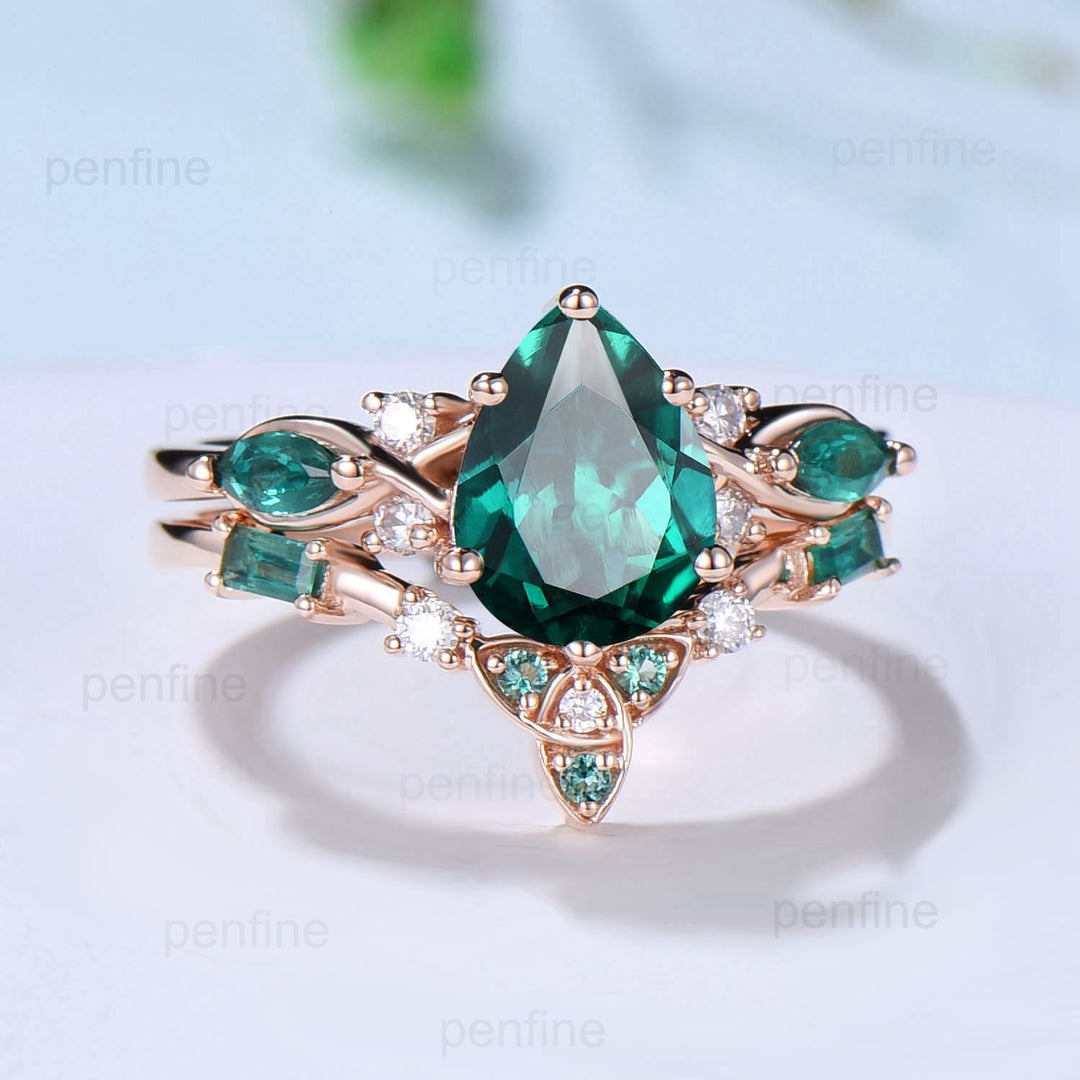A Complete Introduction To Round Cut Stones-12 Round Cut Engagement Rings to Envy
Interpreting from a round brilliant cut diamond profile chart: how should the different parts of the term be described?
A specific set of terms is used to describe the various parts of a polished diamond. Each part of the diamond affects the appearance of the diamond.
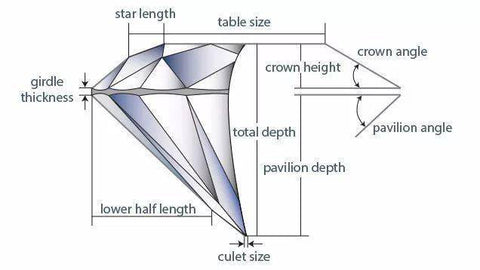
A standard round brilliant diamond has 57 or 58 facets. The table facets are usually the largest facets of the diamond and gather light from above into the diamond, which is then reflected to the eye of the observer or continues into the diamond's interior. The crown facets consist of 8 kite facets, 8 star facets and 16 girdle facets, which gather and scatter light, creating a pattern of light and darkness of brilliance, fire and sparkle. The bottom facet consists of 16 lower waist facets, 8 main facets and an optional pointed base, through which the light folds back to the observer's eye through the crown. All of these facets combine to give each diamond a unique appearance.
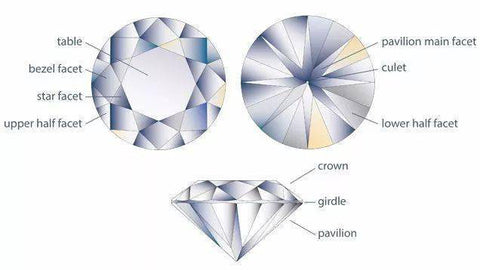
Average Girdle Diameter
The diameter of a round brilliant diamond is the straight line distance from one girdle edge through the center to the girdle edge directly opposite.
Because even a round diamond with a high cut grade cannot be perfectly round, we measure the diameter in several places and record the minimum and maximum measurements.
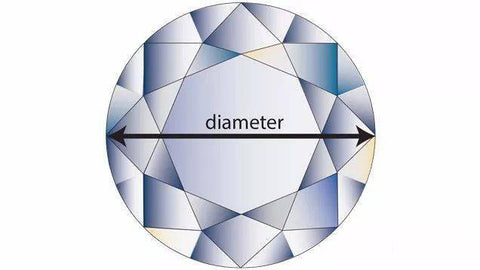
The average waist diameter is calculated by the following formula, then rounded to the nearest hundredth (0.01mm).
Average waist diameter = (minimum diameter + maximum diameter) ÷ 2
This method can also be used to calculate percentages for table top size, total depth, crown height and bottom depth.
Full Depth Percentage
The full depth percentage of a round brilliant diamond is the depth from the table top to the tip, expressed as a percentage of the average girdle diameter, rounded to the nearest thousandth (0.1%).
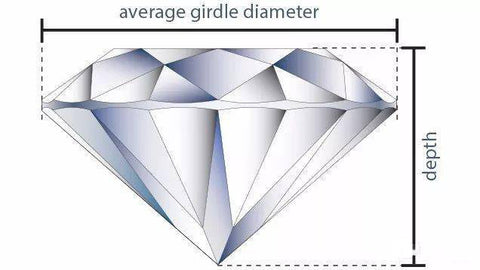
The full depth percentage is calculated by the following formula.
Full depth % = (depth ÷ average waist diameter) × 100
Table Top Percentage
The tabletop percentage for round brilliant diamonds is the average of four tabletop measurements (from kite facet point to kite facet point), expressed as a percentage relative to the average girdle diameter. This value is rounded to the nearest whole percentage (1%).
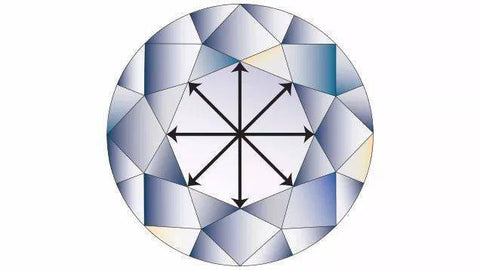

The desktop percentage is calculated by the following formula.
Tabletop % = (average tabletop size ÷ average girdle diameter) x 100
Table size has a significant impact on the frontal appearance of a diamond, especially when the diamond has a specific crown angle and bottom angle.
Star facet length percentage

Star facet length percentage is the percentage of the star facet length relative to the distance from the waistline to the table. The average of the eight star facet length percentages is rounded to the nearest five percent (5%).
A star facet that is too long or too short will negatively affect the frontal appearance of the diamond.
Crown Angle
The crown angle is the angle between the plane of the kite facets and the plane of the table. The average of the eight crown angle measurements is rounded to the nearest zero point five degrees (0.5°).
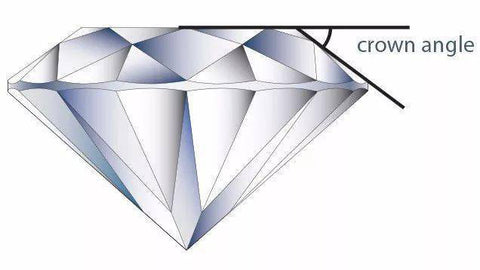
The angle of the crown has a significant impact on the frontal appearance of the diamond. Generally speaking, if the table percentage and bottom angle are right and the crown angle is between 32° and 36°, such diamonds tend to be bright, have a lot of fire and are very eye-catching.
Crown Height Percentage
The percentage of crown height is the height of the crown of the diamond, i.e. the distance between the table top and the part of the kite facets that overlap the girdle, as a percentage of the average girdle diameter. This value is rounded to the nearest five thousandths (0.5%).
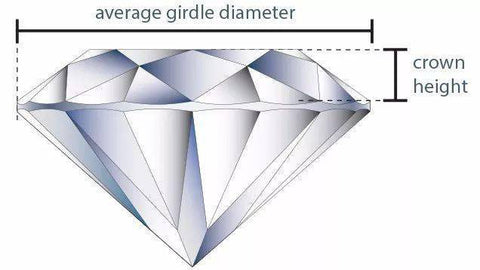
The percentage of crown height was calculated by the following formula.
Crown height % = (average crown height ÷ average waist diameter) × 100
Bottom angle
The bottom angle is the angle between the plane of the main facet of the bottom and the plane of the table. The average of the eight bottom angle measurements should be rounded to the nearest zero point two degrees (0.2°)
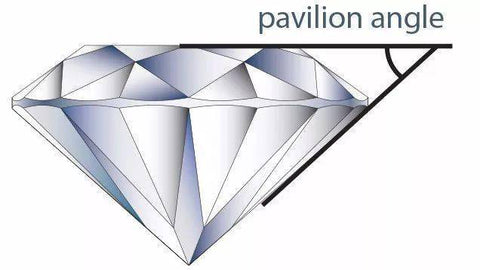
Subtle differences in bottom angle can have a significant impact on the frontal appearance of a diamond. For example, steep bottom angles can create dark areas under the table top of a diamond.
Bottom Depth Percentage
The percentage depth of the bottom is the depth of the bottom of the diamond, i.e. the distance between the pointed bottom and the portion of the bottom main facet that overlaps the girdle, relative to the average girdle diameter. This value is rounded to the nearest five thousandths (0.5%).
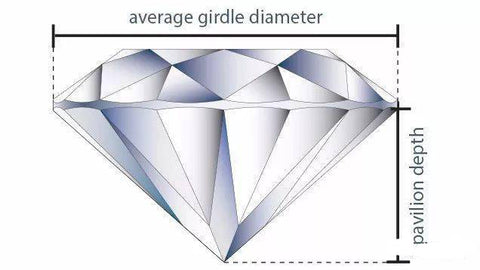
The average bottom depth percentage is calculated by the following formula.
Bottom depth % = (average bottom depth ÷ average waist diameter) × 100
Underwaist facet length percentage
The percent below waist facet length is the percentage of the two below waist facet lengths relative to the distance from the waist circumference to the pointed bottom. The average of the eight lower lumbar facet length percentages is rounded to the nearest five percent (5%).
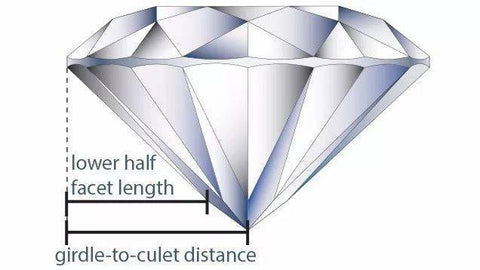
Under-girdle facets that are too long or too short can negatively affect the frontal appearance of a diamond (especially its light and dark patterns).
Girdle thickness percentage
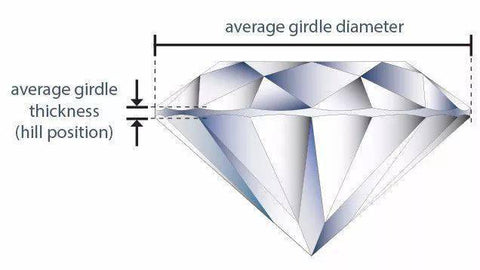
Girdle thickness percentage refers to the average thickness of the diamond girdle, i.e. the average of the readings taken at the eight kite facets/main "arch" locations, as a percentage of the average girdle diameter. The "arch" position is the "thick spot" where the kite facets meet the main facets. This value is rounded to the nearest five thousandths (0.5%).
Description of waist thickness
Waist thickness refers to the visual "valley" location, i.e. the distance between the thinnest (smallest) and thickest (largest) areas. The "valley" position is the "thinner position" at the intersection of the kite's facets/main facets and at the joint between the upper and lower waist facets.

Descriptors for girdle thickness include very thin, very thin, thin, moderate, slightly thick, thick, very thick and extremely thick.
A thinner girdle affects the diamond's solidity, while a thicker girdle imparts unwanted weight. In both cases, the diamond's cut grade will be reduced.
Small facets or girdle thickness deviations
When the angles and positions between the upper and lower girdle facets associated with the kite facets and the main facets are normal, the facet joints will be well defined and the girdle will have an even thickness.
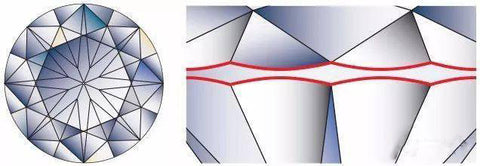
Brushing
Brushing means to tilt the upper or lower waist surface toward the kite surface or the main surface, thus forming a thin "arch" at the joint between the kite surface and the main surface. The angle of the upper or lower waist surface decreases and becomes close to the angle of the kite surface or the main surface, and the boundary between them becomes blurred.


Pick grinding
Pick grinding is the opposite process of brush grinding. It means that the upper or lower waist surface (or both) is tilted in the opposite direction of the kite surface or the bottom surface, so that a thin "arch" is formed at the joint between the upper and lower waist surfaces. The angle of the upper and lower waist facets widens, and the line between the upper and lower waist facets becomes blurred.
Point Size Description
Point size is the width of the facets of the point, when present, and correlates to the average girdle diameter of a round brilliant diamond. The descriptors for a pointed foot include: none, very small, small, moderate, slightly large, large, very large and very large.

When no facets are present, the phenomenon is sometimes referred to as a "protruding" culet and is described as "absent".
A large culet can have a negative impact on the frontal appearance of the diamond, particularly affecting the light and dark patterns of the diamond, which can result in a lower cut grade.
Source: GIA


